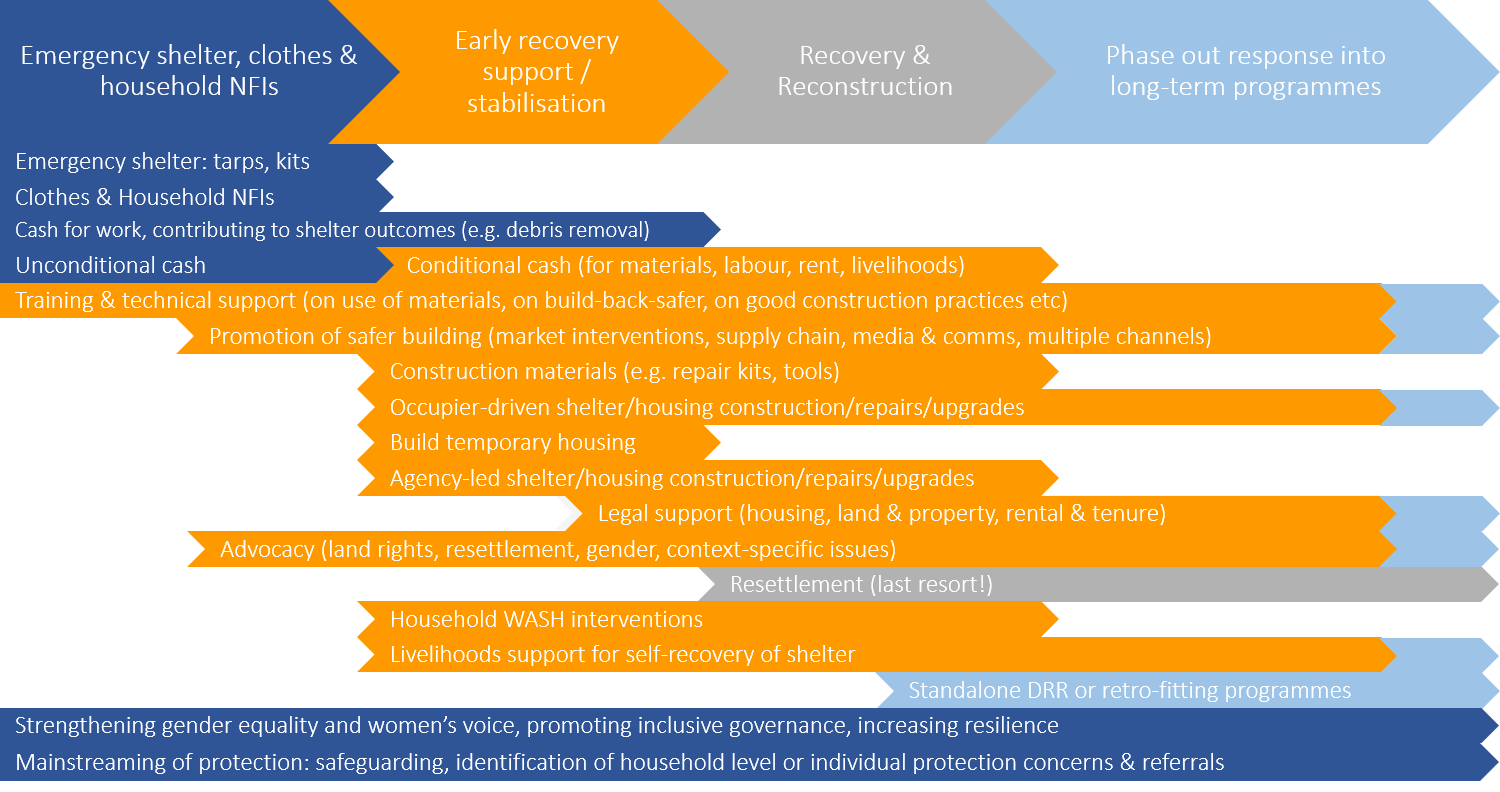4.1 Introduction to Response Options
Shelter programmes should support people’s own preferences and approaches to finding shelter.
Families and communities find shelter after a natural disaster or conflict in a number of different manners. The situation and the needs will vary from one location to another, depending on whether people are displaced or not displaced, on their resources and capacities, and on many other factors. It is also important to understand the likely manner in which a community will recover – what is its probable ‘pathway to recovery’?
The needs assessment should identify these different spontaneous shelter options. Some of the most common are considered below:
Temporary or makeshift shelters
Very sub-standard and basic shelters made from salvaged materials, plastic sheeting, rope, etc. This is never considered to be an adequate or appropriate solution, even in the short-term. The rapid needs assessment should identify the needs of these families so that emergency support can be provided.
Host families
People may stay with host families if they have relations or friends. This can be a good way to stay connected with existing community networks and to access resources. Alternatively, they may pay rent and live with strangers. People staying with host families can be missed during assessments because their situation is not visible. Overcrowding and privacy can be an issue with unsupported host families.
It is important to assess the needs of both hosted and hosting families.
Collective Centres
In the first instance after a disaster, a collective centre is likely to be a community building such as a school, church, hall etc. Destitute families will sleep communally, often in very crowded conditions with inadequate privacy and access to water and sanitation. A shelter programme can support these families with NFIs and materials to improve privacy and dignity. However there is often pressure to vacate collective centres as quickly as possible so that they can revert to their original use, classes can commence etc. Collective centres can also be purpose-built, normally by the government. Generally CARE would consider then to be an option of last resort.
Informal or spontaneous camps
Families that cannot either build a basic shelter, repair their existing house or move-in with another family will be forced to set up informal camps, sometimes within their home community, but sometimes migrating considerable distances. The assessment needs to locate these camps – they can be as small as just one family – and ascertain their emergency and longer-term needs.
Rentals
Displaced people who have the resources to do so may seek to rent land or accommodation in the short or longer term.
Self-recovery
Frequently families initiate a rapid pace of reconstruction and repair and use the resources they have to hand. This might be done in parallel with temporary shelter or hosting, or accommodation in a collective centre.
Depending on the way in which people are seeking to shelter themselves, their plans for recovery, and the capacity of their communities and local organisations to support them, there is a wide range of shelter support options open to CARE and its partners:



